In the ever-evolving automotive landscape, the compact SUV segment has gained tremendous popularity, offering a blend of functionality, style, and efficiency. Two leading contenders in this category are the Audi Q2 and the Ford Puma. Both SUVs present a unique blend of performance, technology, and comfort, but they cater to different preferences and priorities. Let’s dive into a comprehensive comparison of these two dynamic vehicles.
Audi Q2 vs Ford Puma – Which model is better for everyday use?
Everyday use, family trips or long-distance drives – here’s where the differences show.
Discover whether Audi Q2 or Ford Puma fits your lifestyle better.
Design and Dimensions
The Audi Q2 boasts a bold and distinct design, characterized by its sharp edges and angular lines that scream modern sophistication. With a length of 4208 mm and a height of 1508 mm, it provides a commanding presence on the road. The Q2's sporty silhouette, wide stance, and Audi's trademark single-frame grille make a striking first impression.
In contrast, the Ford Puma offers a slightly more rounded profile, featuring fluid lines that enhance its athletic appearance. It measures about 4186 mm in length and stands at 1550 mm high, giving it a slightly taller stance compared to the Q2. Though both vehicles share a five-door layout, the Puma's playful design distinguishes it in the compact SUV market.
Engine Performance and Efficiency
When it comes to engine options, the Audi Q2 presents a wider range of choices, including both petrol and diesel engines. The power output varies from 116 HP in the base model to a robust 300 HP in the high-performance Q2. Fuel efficiency ranges from 4.8 to 7.3 L/100 km, ensuring that even the performance-oriented models maintain a reasonable consumption rate.
The Ford Puma, on the other hand, primarily offers petrol engines alongside an innovative mild-hybrid electric variant. With power ratings up to 168 HP, its most compelling feature is the efficiency of the MHEV system and an impressive fuel consumption of 5.4 L/100 km. Furthermore, the fully electric version provides an electric range of up to 376 km, appealing to eco-conscious drivers.
Transmission and Driving Dynamics
The Q2 is available with both manual and dual-clutch automatic transmissions, providing options for drivers who appreciate tactile control as well as those who prefer effortless gear shifts. The all-wheel-drive variant enhances traction and stability, especially in adverse conditions, making it an excellent choice for those in regions with inclement weather.
The Ford Puma also offers manual and dual-clutch automatic transmissions, but its focus on front-wheel drive translates to a nimble and responsive driving experience. The combination of a lower curb weight and precise steering gives the Puma a sporty feel, ideal for urban settings and winding roads.
Interior Comfort and Technology
Inside the Q2, drivers are greeted with a premium cabin filled with high-quality materials and cutting-edge technology. Audi's MMI infotainment system is user-friendly, offering seamless connectivity options and a striking digital cockpit. The Q2 comfortably seats five with a trunk capacity of 405 litres, providing ample space for everyday use.
The Ford Puma features a modern interior that focuses on practicality, offering smart storage solutions and a spacious cabin. The infotainment system is user-friendly and supports modern connectivity options. It also boasts a slightly larger trunk capacity of 456 litres. Both vehicles ensure a comfortable ride, with ergonomic seating and a well-designed layout.
Safety and Innovations
Safety is a priority for both manufacturers. The Audi Q2 is equipped with advanced safety features like adaptive cruise control, lane departure warning, and a variety of driver assistance systems that enhance safety on the road. Audi’s commitment to building safe vehicles is evident in the Q2’s robust construction and comprehensive safety features.
The Ford Puma doesn’t lag in safety technology, boasting a five-star Euro NCAP rating and featuring Ford's Co-Pilot360 technology, which includes pre-collision assist, blind-spot monitoring, and automatic emergency braking. This commitment to safety combined with innovative features establishes the Puma as a contender that prioritizes driver and passenger protection.
Conclusion
In the contest of Audi Q2 vs. Ford Puma, the choice ultimately comes down to individual preferences and requirements. The Q2 excels with its premium feel, diverse engine options, and all-wheel-drive capability, making it a great choice for those seeking performance with luxury. Meanwhile, the Ford Puma appeals to eco-conscious consumers and urban drivers with its efficient engines, spacious interior, and innovative options like the mild-hybrid variant.
Whether you prioritize luxury, efficiency, or cutting-edge technology, both the Audi Q2 and Ford Puma represent exceptional options in the compact SUV segment, ensuring that buyers have no shortage of excellent choices.
Here’s where it gets real: The technical differences in detail
Costs and Efficiency:
Looking at overall running costs, both models reveal some interesting differences in everyday economy.
Ford Puma has a minimal advantage in terms of price – it starts at 24800 £, while the Audi Q2 costs 24900 £. That’s a price difference of around 86 £.
Fuel consumption also shows a difference: Audi Q2 manages with 4.80 L and is therefore to a small extent more efficient than the Ford Puma with 5.40 L. The difference is about 0.60 L per 100 km.
Engine and Performance:
Under the bonnet, it becomes clear which model is tuned for sportiness and which one takes the lead when you hit the accelerator.
When it comes to engine power, the Audi Q2 has a convincingly edge – offering 300 HP compared to 168 HP. That’s roughly 132 HP more horsepower.
In acceleration from 0 to 100 km/h, the Audi Q2 is convincingly quicker – completing the sprint in 4.90 s, while the Ford Puma takes 7.40 s. That’s about 2.50 s faster.
In terms of top speed, the Audi Q2 performs somewhat better – reaching 250 km/h, while the Ford Puma tops out at 210 km/h. The difference is around 40 km/h.
There’s also a difference in torque: Audi Q2 pulls noticeable stronger with 400 Nm compared to 290 Nm. That’s about 110 Nm difference.
Space and Everyday Use:
Whether family car or daily driver – which one offers more room, flexibility and comfort?
Both vehicles offer seating for 5 people.
In curb weight, Ford Puma is minimal lighter – 1316 kg compared to 1330 kg. The difference is around 14 kg.
In terms of boot space, the Ford Puma offers noticeable more room – 523 L compared to 405 L. That’s a difference of about 118 L.
In maximum load capacity, the Ford Puma performs a bit better – up to 1283 L, which is about 233 L more than the Audi Q2.
When it comes to payload, Audi Q2 hardly perceptible takes the win – 510 kg compared to 469 kg. That’s a difference of about 41 kg.
Who comes out on top?
Overall, the Audi Q2 shows itself to be leaves the rival little chance and secures the title of DriveDuel Champion.
It convinces with the more balanced overall package and proves to be the more versatile choice for everyday use.
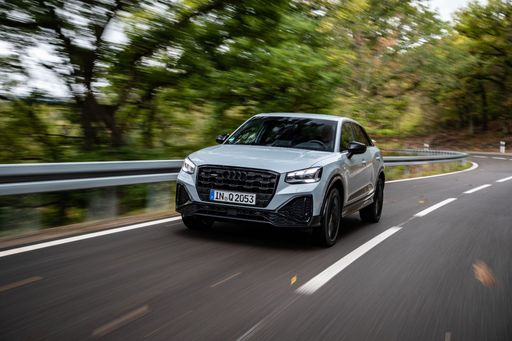 @ Audi AG
@ Audi AG
Audi Q2
Audi Q2
The Audi Q2 packs Audi’s premium attitude into a compact, cheeky package that turns city streets into a runway for tasteful design and clever practicality. It’s an easy car to live with thanks to an upscale cabin, composed manners and sprightly handling, and while it won’t satisfy someone chasing sports-car thrills, it’s a smart, stylish pick for buyers who want substance with a wink.
details @ Audi AG
@ Audi AG
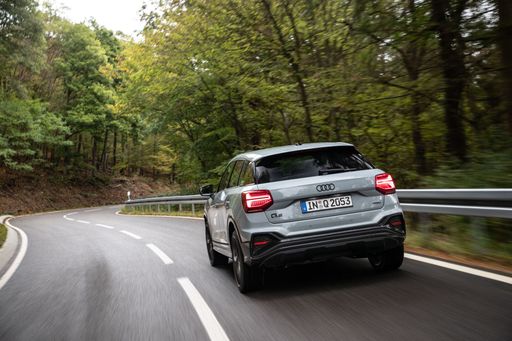 @ Audi AG
@ Audi AG
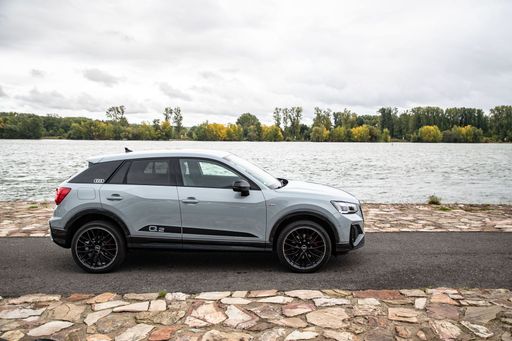 @ Audi AG
@ Audi AG
 @ Audi AG
@ Audi AG
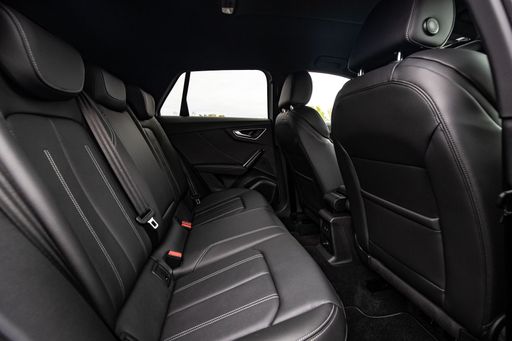 @ Audi AG
@ Audi AG
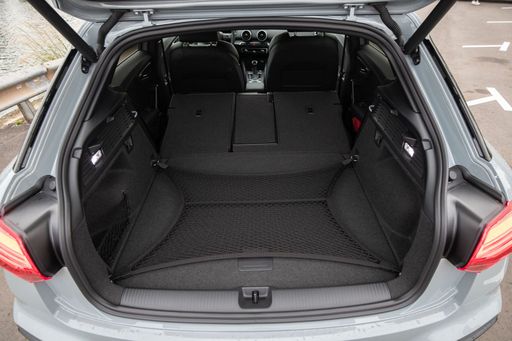 @ Audi AG
@ Audi AG
Ford Puma
The Ford Puma is a cheeky compact crossover that blends sporty styling with city-friendly practicality, giving drivers a surprisingly fun and composed ride. With clever storage tricks and a lively personality, it’s a smart pick for buyers who want enjoyment without fuss.
details @ Ford Motor Company / Ford Media Center
@ Ford Motor Company / Ford Media Center
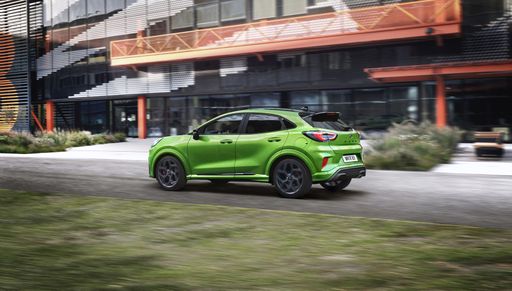 @ Ford Motor Company / Ford Media Center
@ Ford Motor Company / Ford Media Center
 @ Ford Motor Company / Ford Media Center
@ Ford Motor Company / Ford Media Center
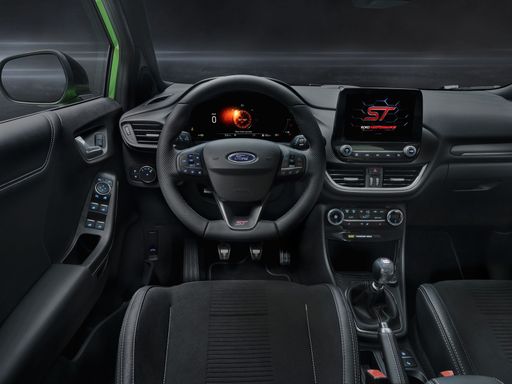 @ Ford Motor Company / Ford Media Center
@ Ford Motor Company / Ford Media Center
 @ Audi AG
@ Audi AG
|
 @ Ford Motor Company / Ford Media Center
@ Ford Motor Company / Ford Media Center
|
|
|
|
Costs and Consumption |
|
|---|---|
|
Price
24900 - 43600 £
|
Price
24800 - 36300 £
|
|
Consumption L/100km
4.8 - 8.1 L
|
Consumption L/100km
5.4 - 5.9 L
|
|
Consumption kWh/100km
-
|
Consumption kWh/100km
13.1 - 13.9 kWh
|
|
Electric Range
-
|
Electric Range
361 - 376 km
|
|
Battery Capacity
-
|
Battery Capacity
43 kWh
|
|
co2
127 - 183 g/km
|
co2
0 - 135 g/km
|
|
Fuel tank capacity
50 - 55 L
|
Fuel tank capacity
42 L
|
Dimensions and Body |
|
|---|---|
|
Body Type
SUV
|
Body Type
SUV
|
|
Seats
5
|
Seats
5
|
|
Doors
5
|
Doors
5
|
|
Curb weight
1330 - 1610 kg
|
Curb weight
1316 - 1563 kg
|
|
Trunk capacity
355 - 405 L
|
Trunk capacity
456 - 523 L
|
|
Length
4208 - 4216 mm
|
Length
4186 - 4226 mm
|
|
Width
1794 - 1802 mm
|
Width
1805 mm
|
|
Height
1495 - 1508 mm
|
Height
1550 - 1555 mm
|
|
Max trunk capacity
1000 - 1050 L
|
Max trunk capacity
1216 - 1283 L
|
|
Payload
450 - 510 kg
|
Payload
367 - 469 kg
|
Engine and Performance |
|
|---|---|
|
Engine Type
Petrol, Diesel
|
Engine Type
Electric, Petrol MHEV
|
|
Transmission
Manuel, Automatic
|
Transmission
Automatic, Manuel
|
|
Transmission Detail
Manual Gearbox, Dual-Clutch Automatic
|
Transmission Detail
Reduction Gearbox, Manual Gearbox, Dual-Clutch Automatic
|
|
Drive Type
Front-Wheel Drive, All-Wheel Drive
|
Drive Type
Front-Wheel Drive
|
|
Power HP
116 - 300 HP
|
Power HP
125 - 168 HP
|
|
Acceleration 0-100km/h
4.9 - 10.5 s
|
Acceleration 0-100km/h
7.4 - 9.8 s
|
|
Max Speed
197 - 250 km/h
|
Max Speed
160 - 210 km/h
|
|
Torque
200 - 400 Nm
|
Torque
170 - 290 Nm
|
|
Number of Cylinders
3 - 4
|
Number of Cylinders
3
|
|
Power kW
85 - 221 kW
|
Power kW
92 - 124 kW
|
|
Engine capacity
999 - 1984 cm3
|
Engine capacity
999 cm3
|
General |
|
|---|---|
|
Model Year
2025
|
Model Year
2025
|
|
CO2 Efficiency Class
D, F, E, G
|
CO2 Efficiency Class
A, D
|
|
Brand
Audi
|
Brand
Ford
|
What drivetrain options does the Audi Q2 have?
The Audi Q2 is offered with Front-Wheel Drive or All-Wheel Drive.
The prices and data displayed are estimates based on German list prices and may vary by country. This information is not legally binding.
